Report #10: GA70 - Is it the shortest mainline GA flight?
This will be my report on flying on Garuda Indonesia economy class from Jakarta to Bandar Lampung, a cross-strait flight within Indonesia and one of the shortest GA mainline flights, on board their Boeing 737-800.
This is the first part of the 2 reports for this trip. For the second part featuring XN from TKG to PLM on Dornier 328, read here.
Background
Being based in Jakarta, I had always got the desire to explore places beyond Jakarta and its surroundings, and as what some would say as avgeek I am also interested on trying unique planes. With Express Air operating Dornier 328 plane on the BDO - TKG - PLM - PKU - either TNJ - MWK or MKZ, I decided that my trip would revolve around either Bandar Lampung or Palembang.
After much consideration and input from my colleagues, following is the itinerary:
Jakarta - CGK: Car
CGK - TKG: Plane (you are here)
TKG - PLM: Plane (next part)
Palembang - Bandar Lampung: Intercity train (next part)
Bandar Lampung - Jakarta: Ship (you are here)
The itinerary is nowhere efficient, but highly unique as there are many direct flights from Jakarta CGK to Palembang PLM. Besides, this trip is more expensive than the trips covered on my past reports as it involves two plane rides although still possible thanks to my current internship compensation.
Trip to CGK and check-in
As I stayed and worked in South Jakarta, there are various ways to go to the airport at least partially by public transport, each with their own advantages:
- Take private car or feeder bus (transit at Bundaran Senayan) to Blok M Terminal and take the direct airport bus,
- Take private car to Kebayoran Stn, electric train to Poris Stn via Tanah Abang Int and Duri Int, and take private car to the airport, or
- Take feeder bus and BRT to Kalideres Terminal (transit at Tosari and Harmoni or Bendungan Hilir and Grogol) and take private car to the airport.
Thanks to my dinner with my colleague and waiting for one of my colleagues having his last day at the office, I could not take the direct airport bus and the last electric train from Duri Int to Poris Stn had departed, so I decided to take carpooling service to the airport via Duri Int as I was trying my luck on getting the last train, or at least get my single-use farecard deposit back.
The trip to Duri Stn was quite uneventful, although there were some jams along the way.

The station was unfortunately already closed, so I decided to take the second trip by carpooling service again to the airport. Outside the station there is that chain of smashed fried chicken. Despite the humble looking brand, all restaurants/warung combined they serve close to 1 million portions every month.

The traffic got better on the way to the airport.

Terminal 3 is the newest terminal in CGK and features a distinctive design compared to terminals 1 and 2.

I was then dropped off and afterwards is a preliminary security screening. As CGK terminal 3 already has their own baggage screening facility, this seems rather useless although the screening itself was fast.



As the terminal is GA's global hub and it has no operation on midnight, the terminal looked especially quiet. I then asked at the information desk about shower facility, which he then said that shower area is available at the transit area.
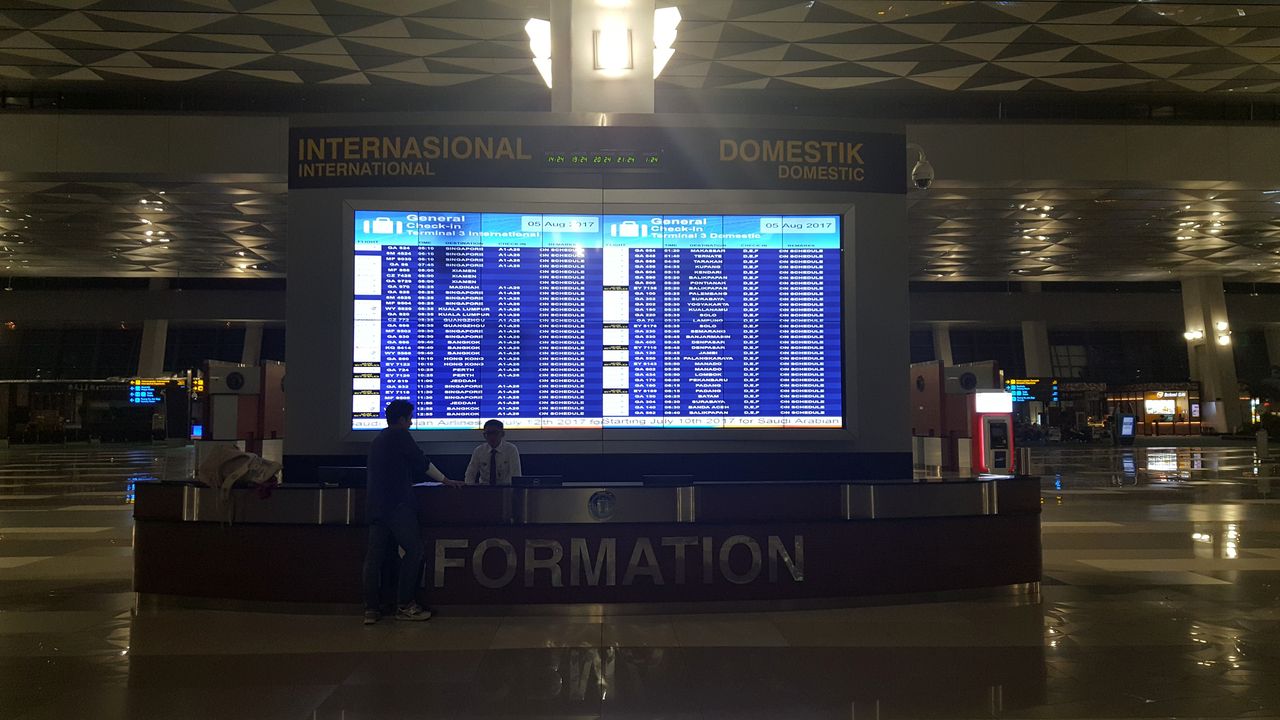

This terminal now features self check-in machines for Garuda, a first in the airline's history.


The kiosk check-in feature is only available from 4 hours to departure, with steps heavily derived from GA's web check-in.



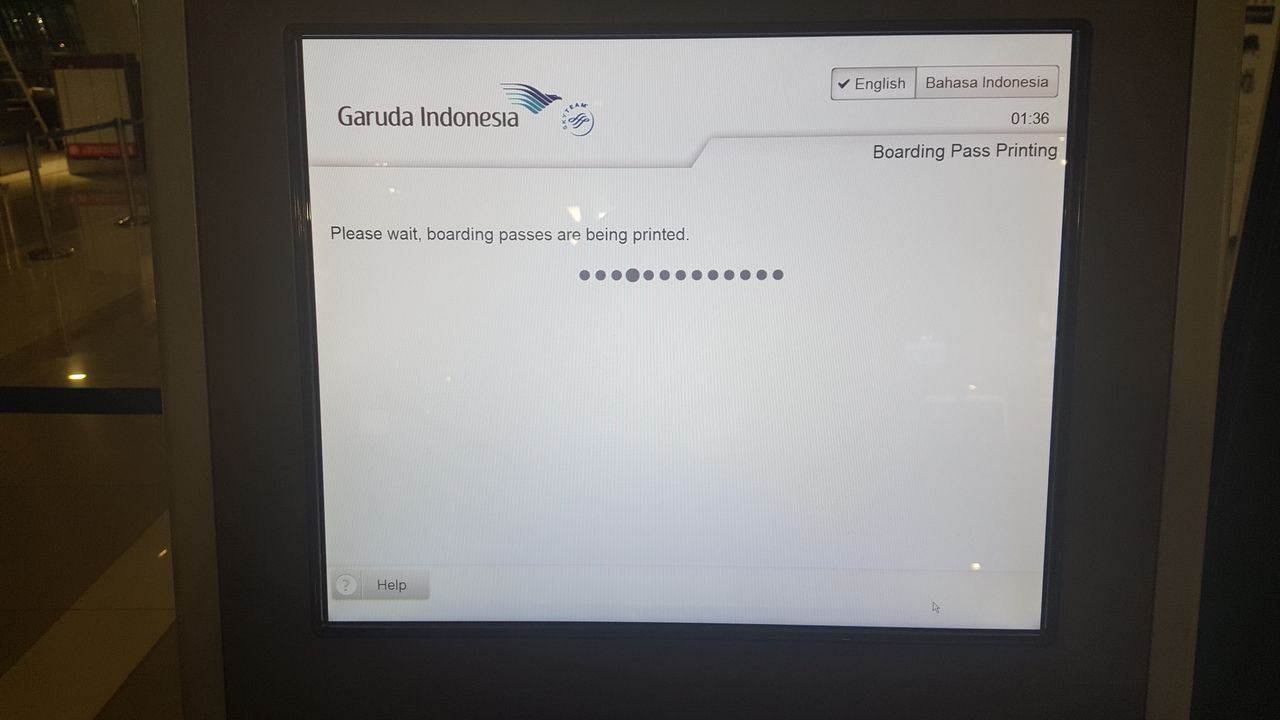

The boarding pass printed at the kiosk. The paper feels quite heavy for a kiosk-printed boarding pass, but at the same time still lighter than the one issued at the counter and worse, bears no logo at all.

Seats are available to sleep, and as a big plus they also provided electrical plugs below some seats. This is especially important as the seats are located in the middle of the check-in area rather than near handrails.

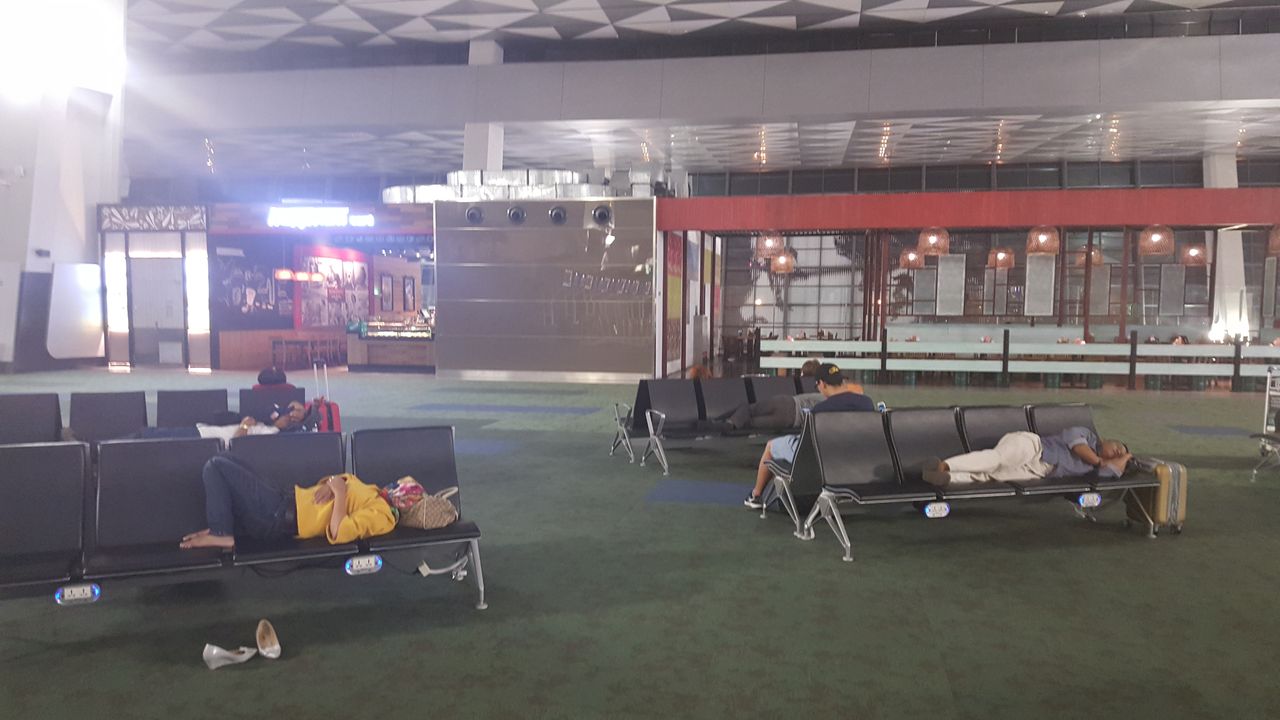
Most restaurants in the public area were closed.

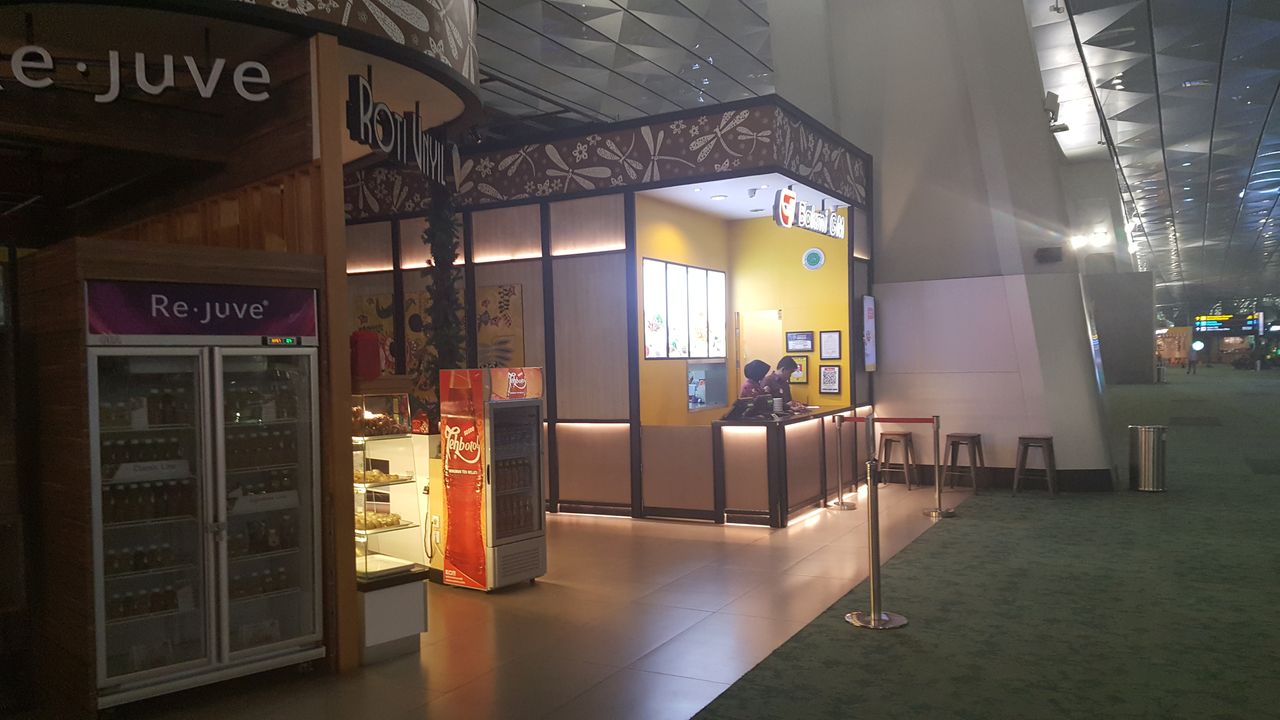


The signage is printed in English, Indonesian, Chinese, and surprisingly, Japanese. Such design and even the materials for the airport terminal get more common in Indonesia's newer airport terminals.
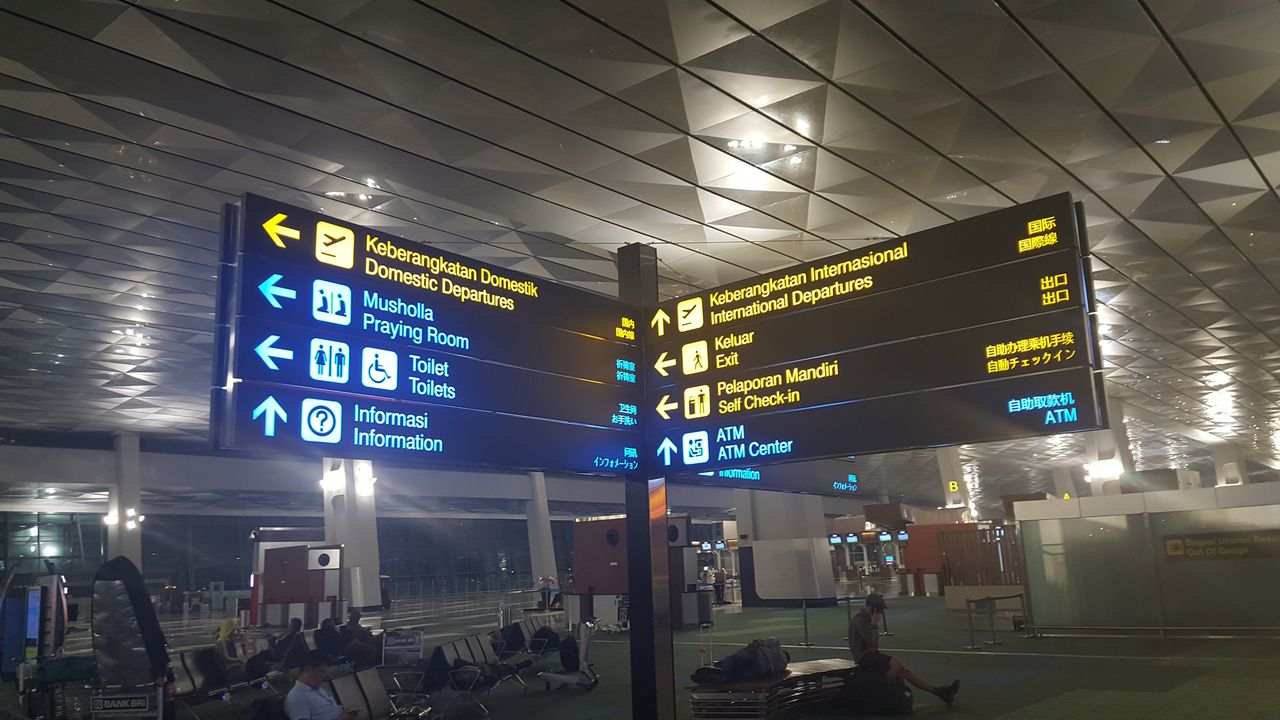
International check-in area for SkyTeam members and even more seats.


There are two minimarkets in the check-in area, FamilyMart (a Japanese convenience store chain, pictured) at the end of international check-in area and Alfa (an Indonesian convenience store chain) at the end of domestic check-in area.

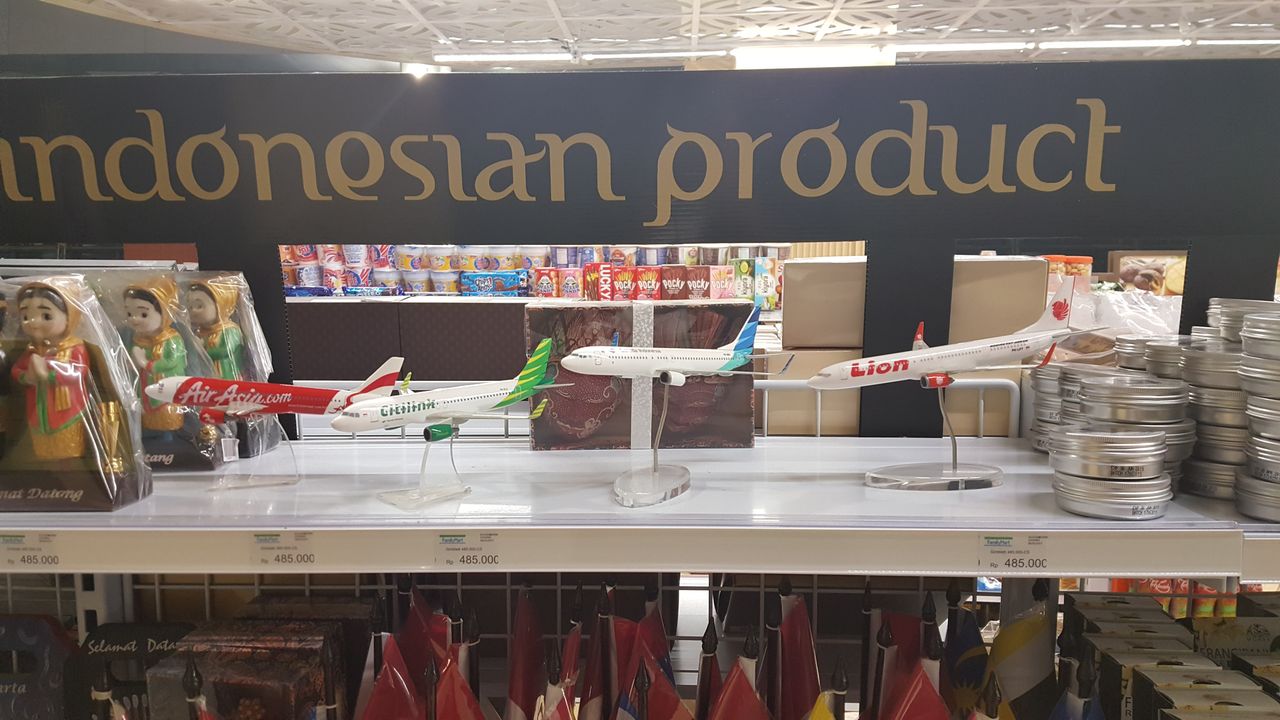
The toilet was clean and looked better than the ones at CGK terminal 1 and 2. Interestingly enough, the closet features both a washlet and a bidet shower where usually only either one is available.


Like at Singapore SIN terminal 3 (the benchmark for CGK terminal 3 according to our government), walking from end to end of the check-in area is a sport on its own.

As the check-in counters were already open, I decided to get my properly printed boarding pass, which took me 3 minutes. I also inquired of the load, which was said as pretty light.


The counter-issued boarding pass is the typical boarding pass expected of a full-service carrier.

The premium check-in area, featuring sofas.

I then proceeded to the security check.


The X-ray machines were partially covered by the air, making them look less intrusive.


Security was also fast and I was through in less than 5 minutes.
CGK transit area and departure
After security there are benches for people to return their items to their supposed places.

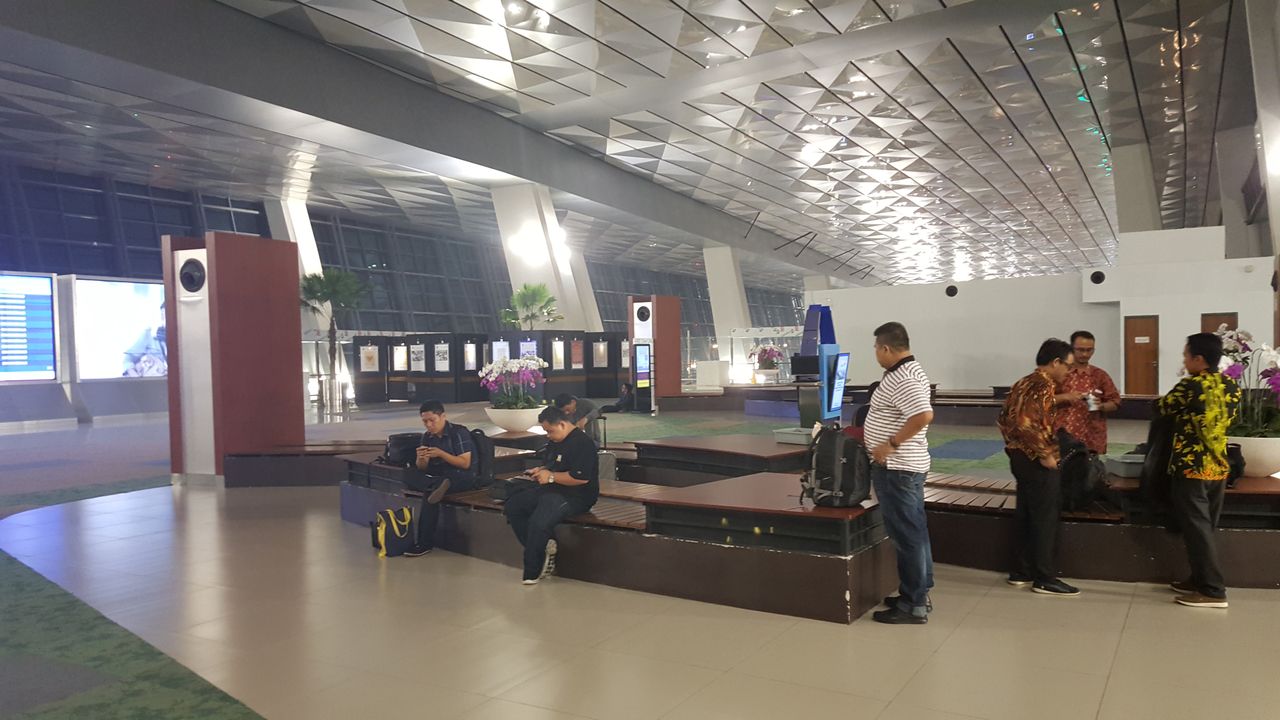
The airport features huge FIDS, but they don't even bother with showing gate numbers.

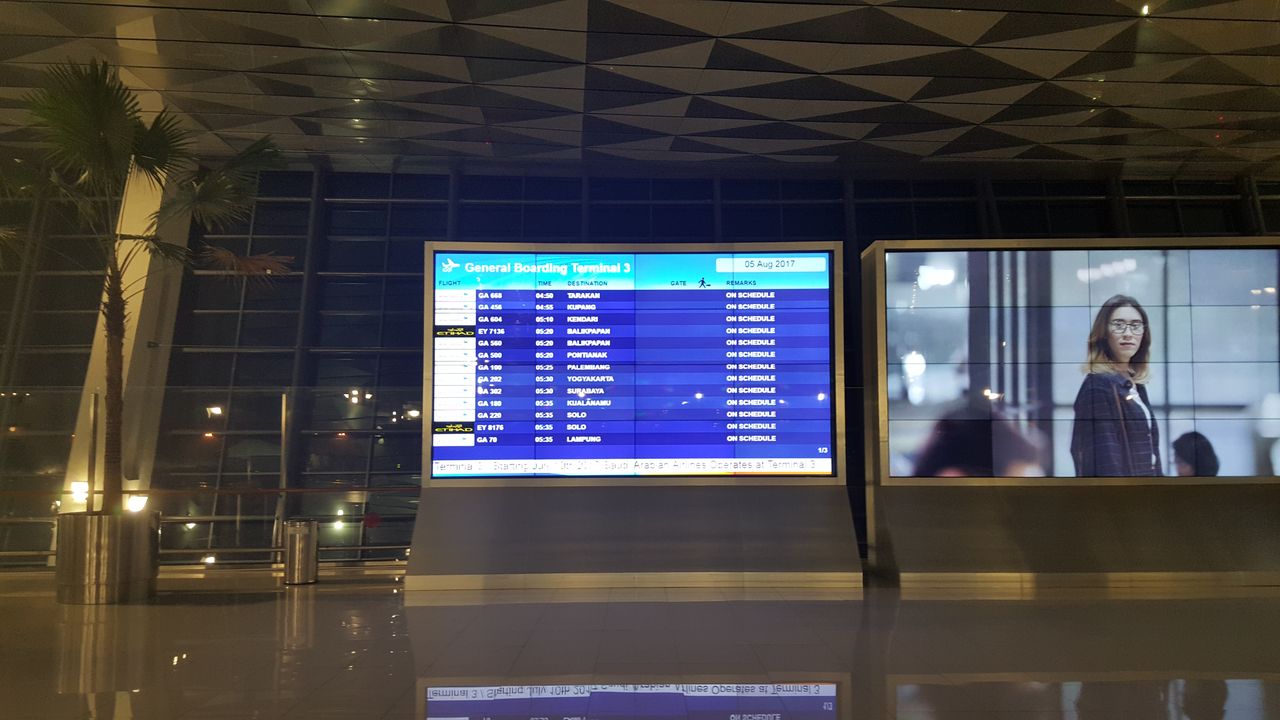
The waiting area from above - the flooring made the place look quite cheap.
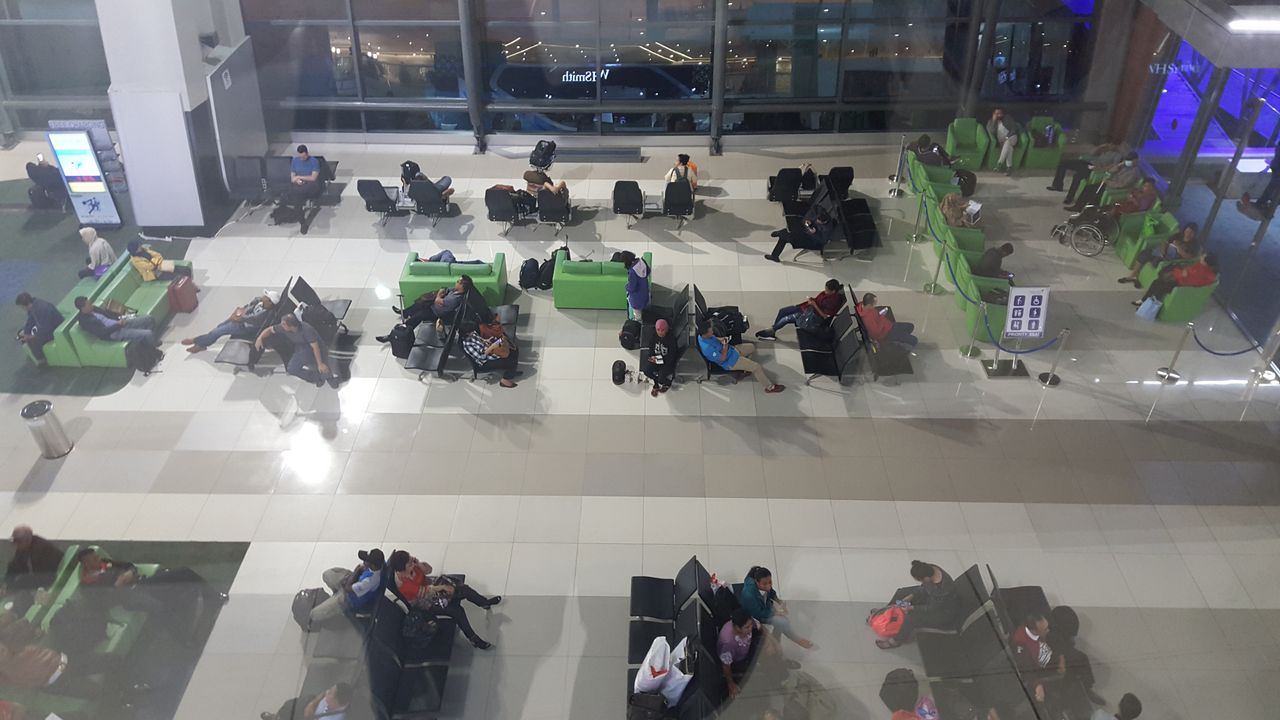
Similar to Kuala Lumpur KUL domestic departure, there are various shops I would need to pass before going down to the waiting room level.

I then looked for the shower, which was located near gate 11.


Before entering the shower room, I was requested to surrender my boarding pass to the shower attendant and afterwards was shown my way to the room.

This is where CGK terminal 3 excels over other airports: every user has their own shower room free of charge, rather than just a shower cubicle like in Kuala Lumpur KUL. The wash basin and closer looked clean and the room well-lit.
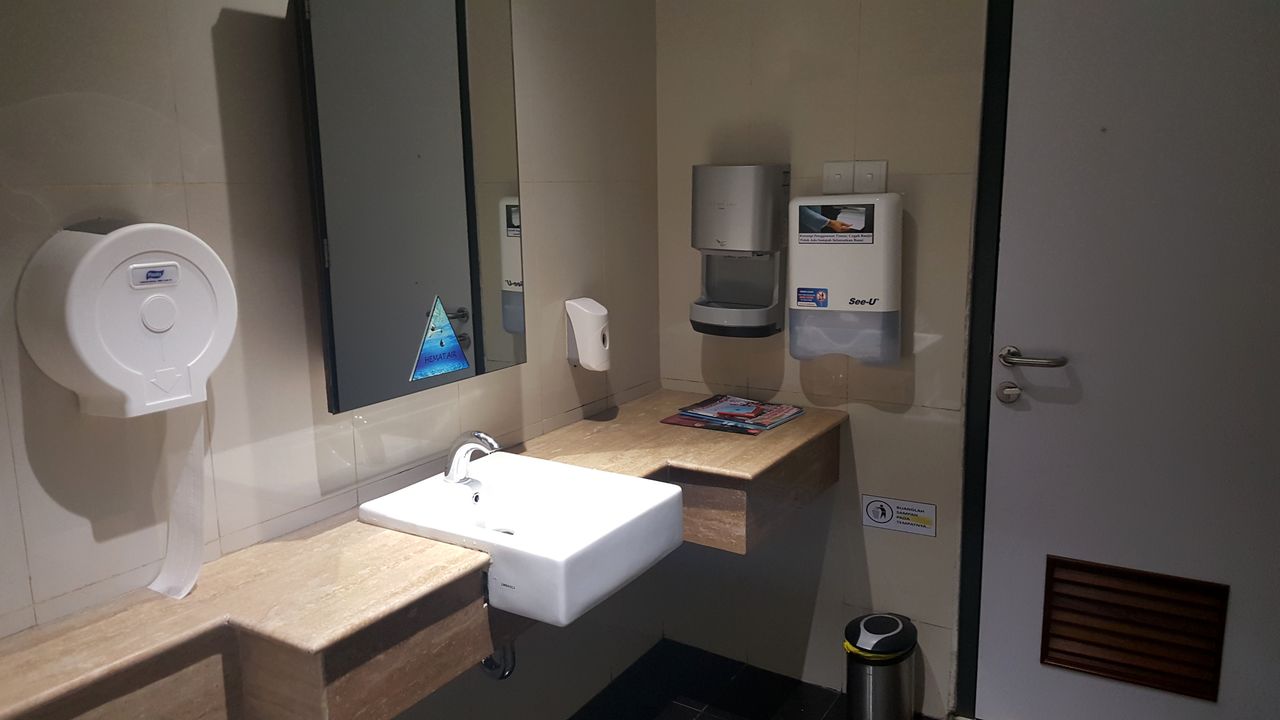

The shower also provides a very good water flow (although only cold water is available), however there is nowhere but the floor to put my toiletries. The shower itself is quite prone to flooding the basin and closet area due to the water flow. Nonetheless, for a free of charge shower it could be considered as luxurious.
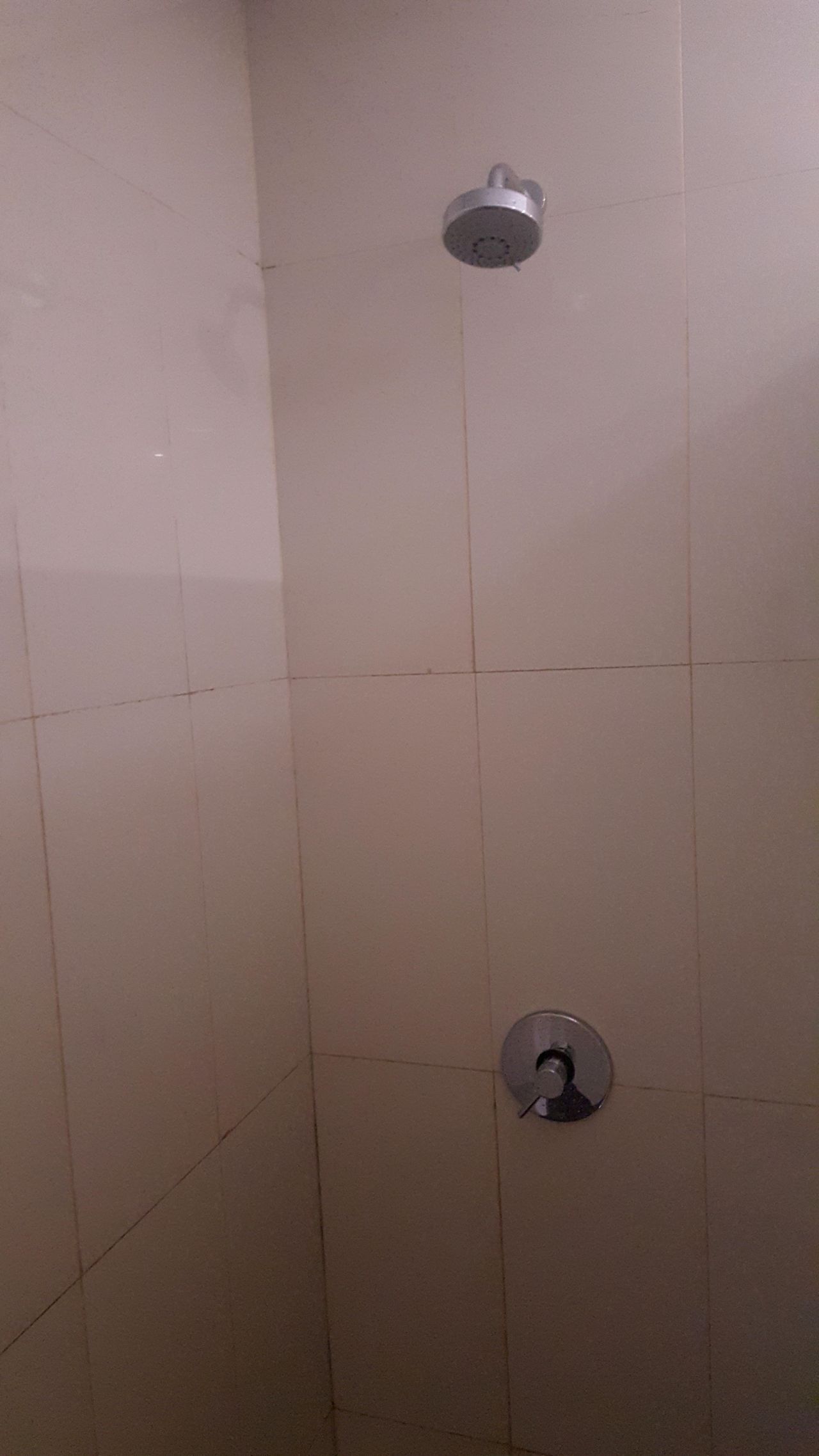
The waiting area features single, fixed-recline seats and sofas.

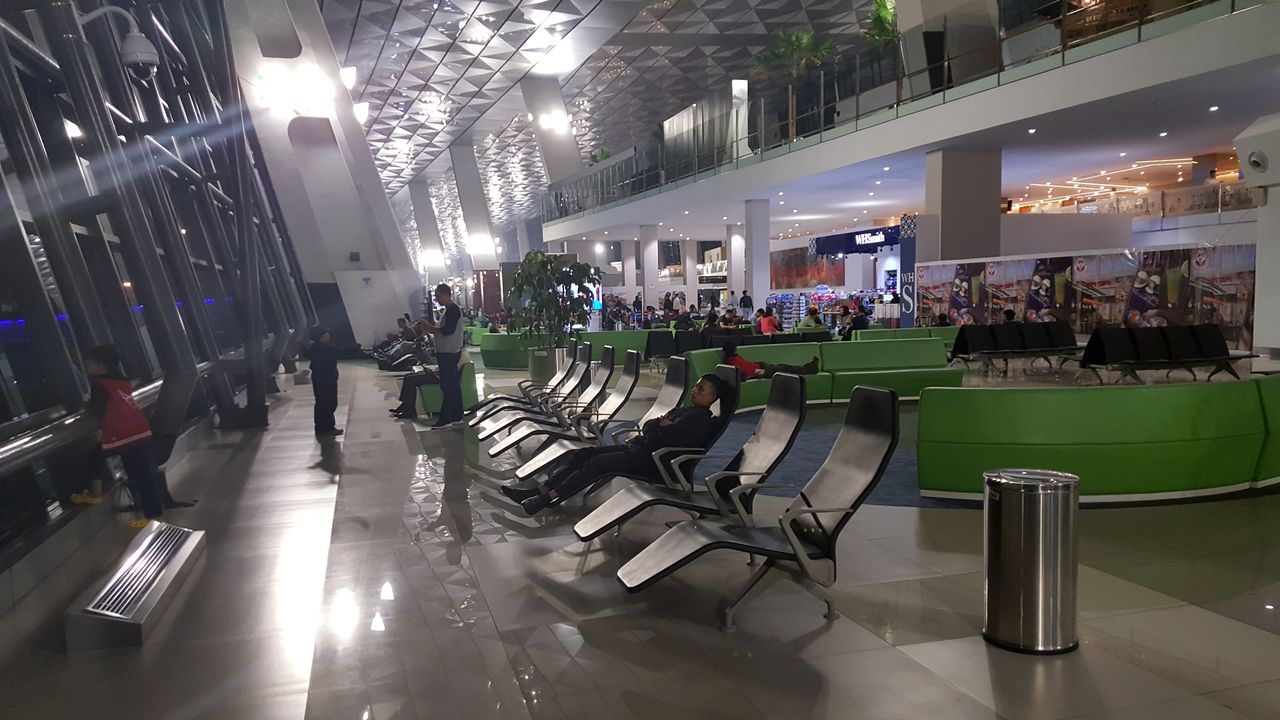
Free magazines from one of the Indonesia's legislative bodies.

If walking across the check-in area is a sport, then going to gate number 20 and above would be sport on another level.

GarudaMiles lounge for GarudaMiles gold members (equivalent to SkyTeam Elite) seen from below.

Someone decided to make the bridges look fancy and put purple lamps on them.


The plane about to bring me to TKG - PK-GFG, one of Garuda's older 737-800s.


I had my breakfast which I bought from a stall at the transit area. At close to Rp50.000 (US$3.75), the snacks were not worth the price as most of them are subpar from what could be otherwise found at traditional markets.

Boarding soon started and as the load was light he process was painless.


The yellow cabin light and the lack of the Sky Interior sticker also signifies the aircraft's age.

On board
Flight: GA70
Plane: PK-GFG
ETD/ATD: 05.35/06.04
ETA/ATA: 06.40/06.36
Load factor: 25% C (3/12), 46% Y (69/150)
Seat type: Standard economy class
Details: https://flightaware.com/live/flight/GIA70
Newspapers were provided, typical of a Garuda Indonesia flight, and I opted for The Jakarta Post.

Garuda's regional business class seats.
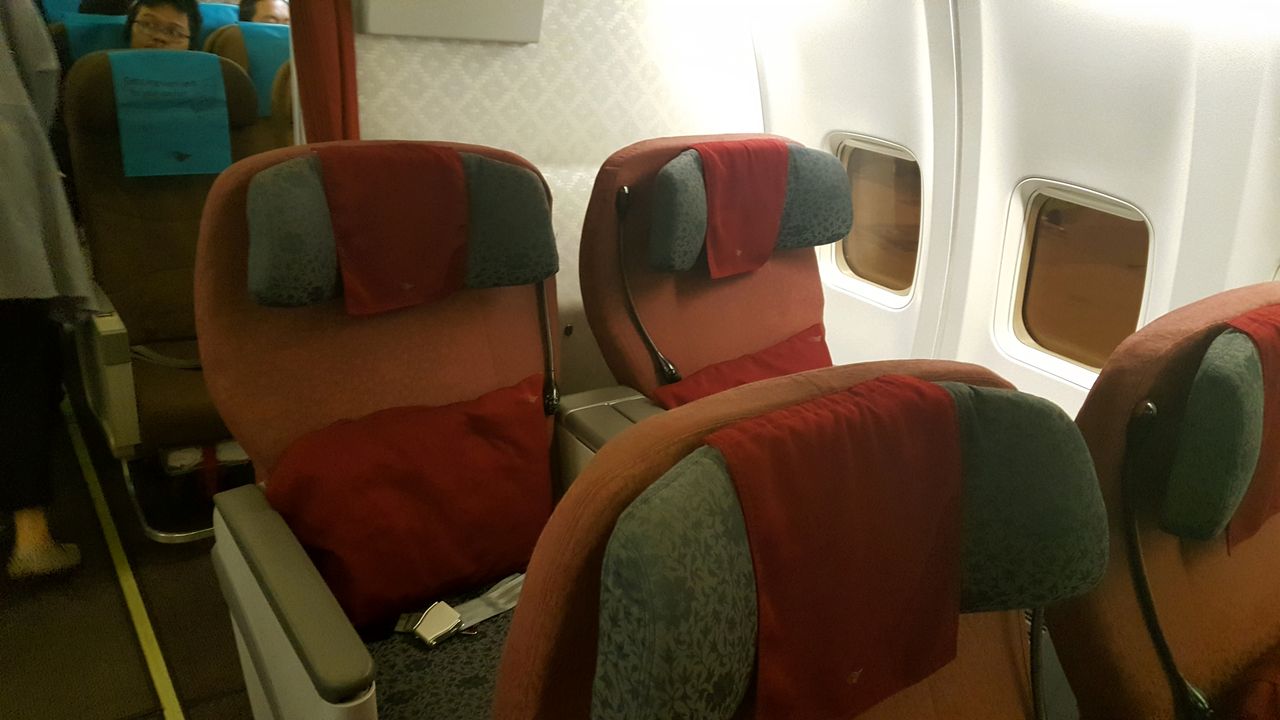
The economy class seats, on the other hand, were only half full.

Legroom was acceptable, although after flying business class slightly more often it somehow started to look a bit small (I'm 5' 10"). On the bright side, the middle seat was empty.


As PK-GFG is quite old, even the color of the lamps are not the same.

Inside the seat pocket are the usual goodies expected, minus the in-flight magazine (Stars is their IFE guidebook)

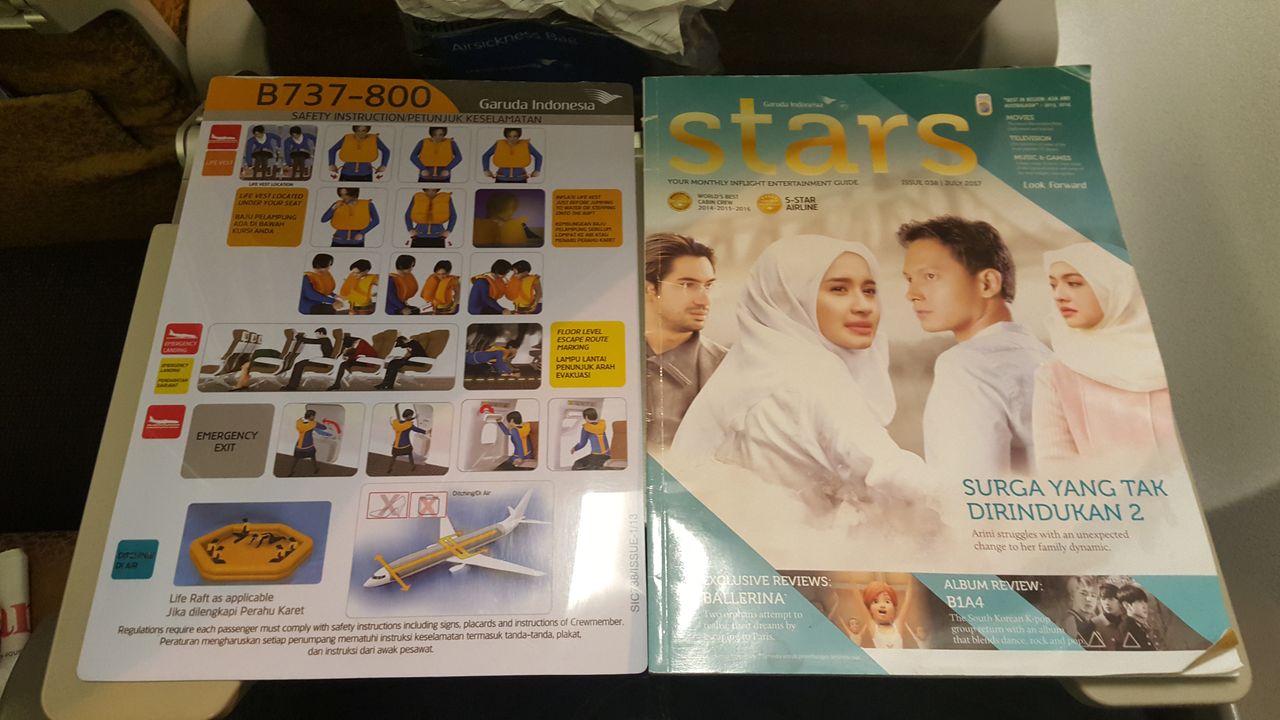
As I was seated below the cargo hold, I could hear the handlers throwing the baggage inside the hold - they didn't even use a proper truck for the flight.


Subtitle and sign language narrator is now shown when the safety video was played.

Due to the congestion caused by the morning peak, the plane had not even pushed back. I then decided to view the offerings on the IFE, which screens are now quite touch-responsive, and could not find any classical choral musics, which was disappointing and I ended up viewing the map for the whole flight. The pilot kept us updated on the delay, which was appreciated.


The plastic covering for the sidewall lamp was not even properly installed.

A few minutes later, we were allowed to push back. Garuda is famous for having the largest amount of buffer time among all Indonesian airlines, which makes it still possible to arrive "on time" despite delays.

GA's vintage livery 737-800 and CRJ-1000.

The basic flight information showing the only less than 30 minutes flight time.
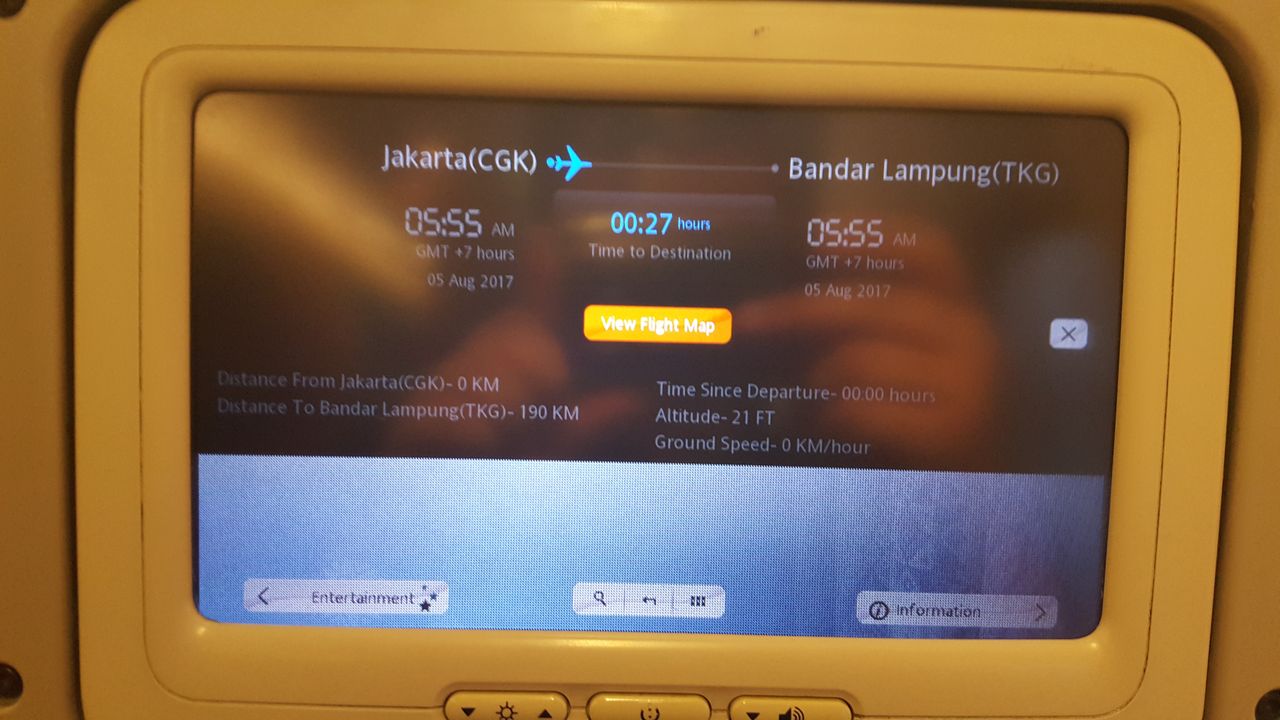
Last view of CGK terminal 3.
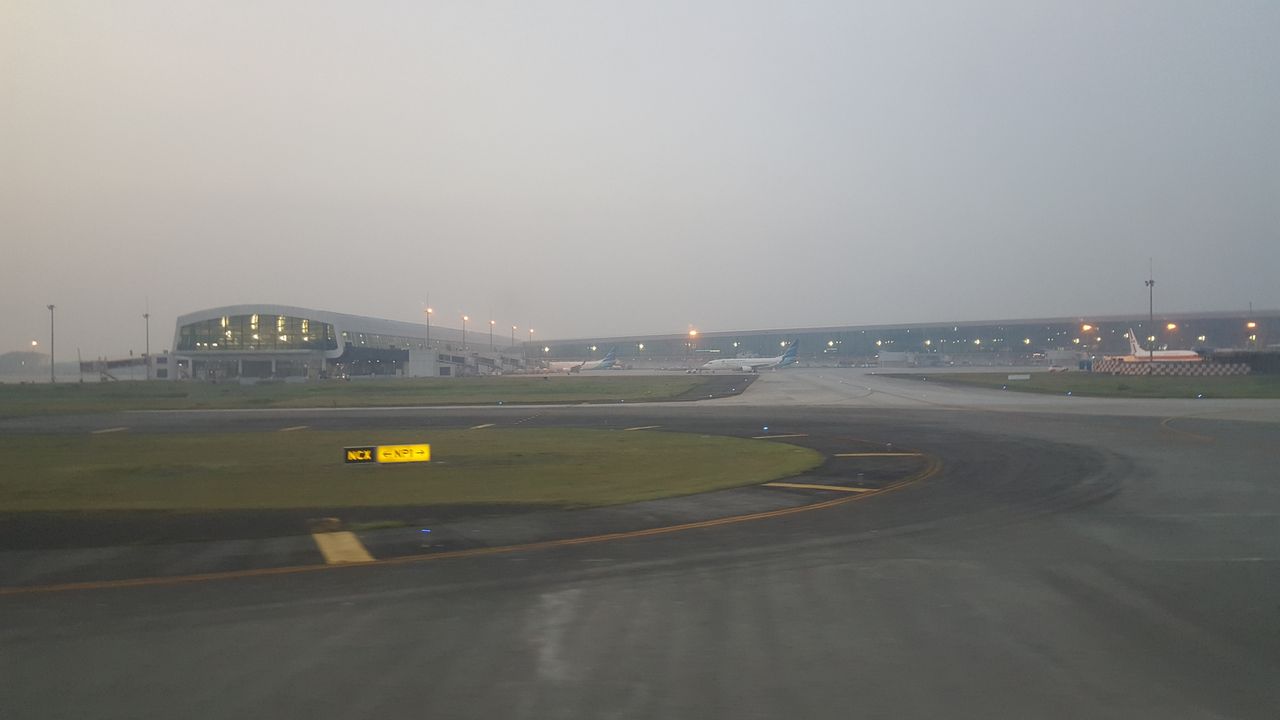
The plane took off at 6.04 AM, far behind the 5.35 ETD. After we passed the gloomy sky in Jakarta, we were greeted with a quite bright morning.


As the seat belt sign was switched off, the flight attendants quickly sprung into action and provided a snack box. The service was very rushed and almost without uttering any word as they only have a few minutes to serve.


There was no menu provided for the flight, but here are the foods and drink provided:
- Biscuit: belVita brand breakfast biscuit
- Bread: Bread with shredded chicken in curry flavour
- Drink (default): Aqua brand mineral water
The bread offered tasted quite good, however the biscuit was offered in small size, making the overall snack look like it has gone through severe cost-cutting.

Throughout the flight, the seat would make the subtle click voice quite a few times and recline slowly without me pressing the recline seat button. When the seat gets too comfortable (aka fully reclined), I would then need to press the recline seat button to make it upright and the same would happen again throughout the flight.
Some views during the approach to TKG. Rather than directly landing, it would fly over the airport, hold for a few moments, and only afterwards it would make its final approach.


The flight map.

We touched down at 6.36 at runway 32, but as TKG is a small airport we needed to turn around to get to the terminal.
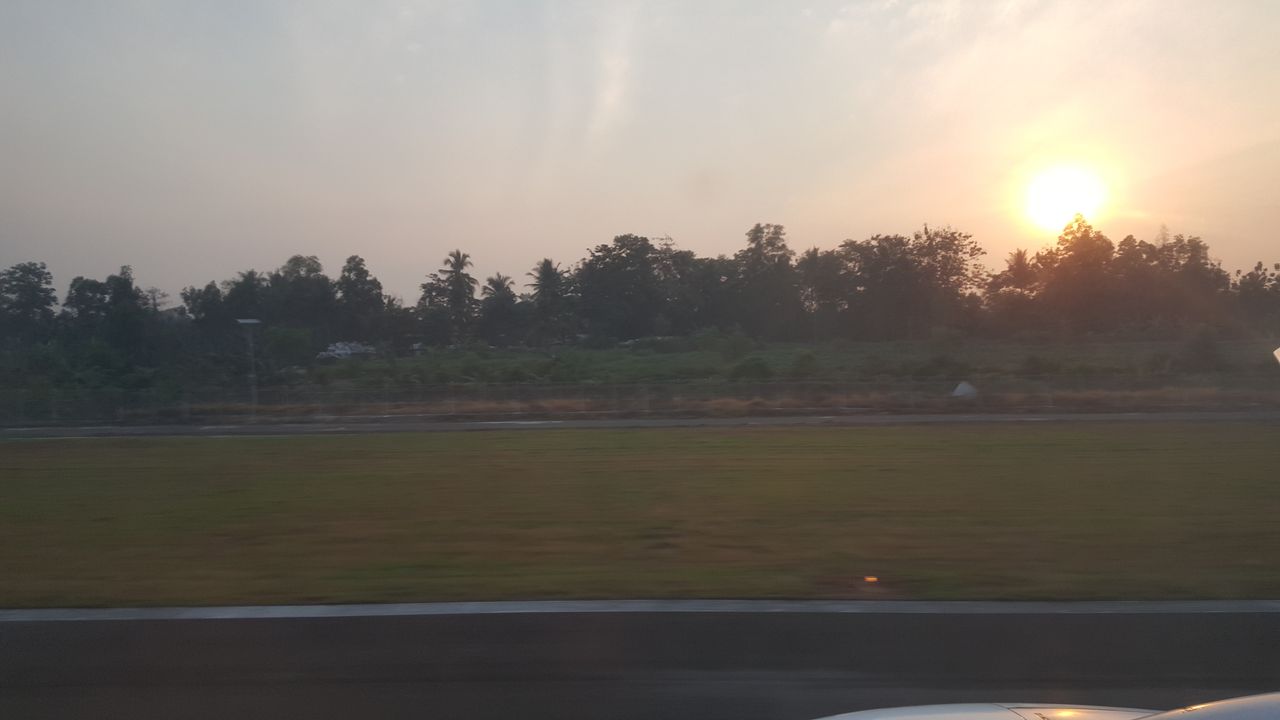

The new airport terminal, fitted with just one jetway which Garuda didn't even use.

Parked nearby us is a ID A320 (the Indonesian version of OD)

As I was the last one to deboard, I told the flight attendant of the seat problem and took a last photo of the cabin. After I took the photo, a flight attendant watched by the other flight attendants would sit on my seat and try to recreate the problem I had.

Some last views of PK-GFG.


We were then taken to the arrival area by bus.


Arrival at TKG
Major airports in Indonesia such as CGK, SUB, DPS, and KNO are usually managed by Angkasa Pura I / II. This airport, however, is one of the smaller airports in Indonesia, so the airport is directly managed by the Ministry of Transport, DGCA. As a result, there are several differences when it comes to the airport quality and design compared with the ones managed by Angkasa Pura I / II.
We entered the arrivals area. While they are working hard on incorportating Bandar Lampung-style design, putting it on text makes it look awkward and rather cheap.

The carousel is pretty small as only narrow-body planes would land there.


The Welcome to Bandar Lampung banner is clearly visible and decorated.

As TKG is not usually used to transit, the transit "area" was unused and filled with a suggestion box

As soon as I exited the airport, there were a lot of people touting taxi services. Note, however, that Bandar Lampung has few public transport options and online ride-sharing platforms are nnot as widespread as in larger cities.


Bus services to the city is also available at Rp20.000 (US$1.5) one way, per person.

The walkway to the carpark looked interesting.

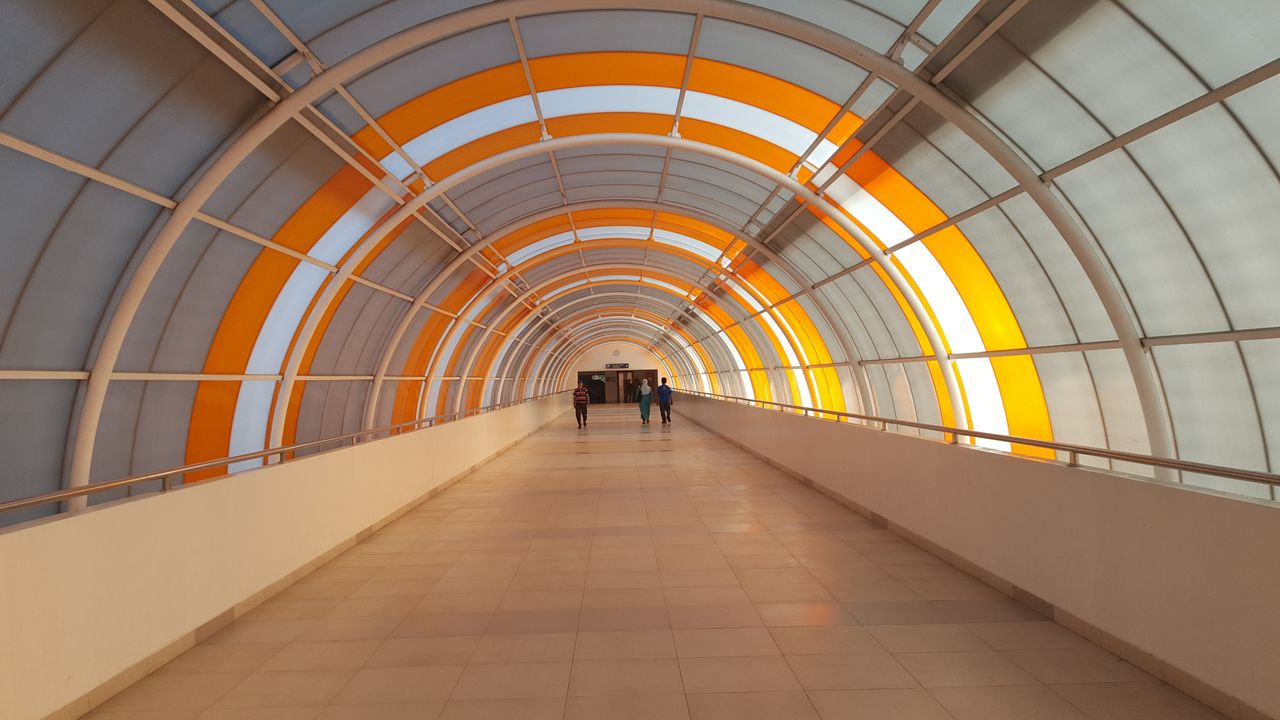
What follows afterwards would be my flight to Palembang, which is covered on the next installment (read here).
Bonus: Bandar Lampung to Jakarta by direct ship
The fastest way to go from Bandar Lampung to Jakarta is by plane, but how about the slowest one? Try the direct ship from Panjang Port in Bandar Lampung to Tanjung Priok Port in North Jakarta, featuring up to 7 hours delay and 11 1/2 hours of travel time, not including getting out from the massive Tanjung Priok Port.

Since I thought it would be impossible to catch the 8AM ship to Tanjung Priok, I decided to have a breakfast and visit Museum Lampung while waiting for Starbucks to open. The museum was old and poorly maintained, so it made sense not to charge any entry fee as it's not worth visiting.

Afterwards, I went to the mall where there is a Starbucks and decided to resupply for my trip by ship later on before working at Starbucks.
Views of Bandar Lampung taken on my trip to get my lunch - even more pempek.


Only in Bandar Lampung: folding doors have that Bandar Lampung-style pattern put on so many places it even looks as if putting those kinds of pattern is compulsory.

Lunch of the day.

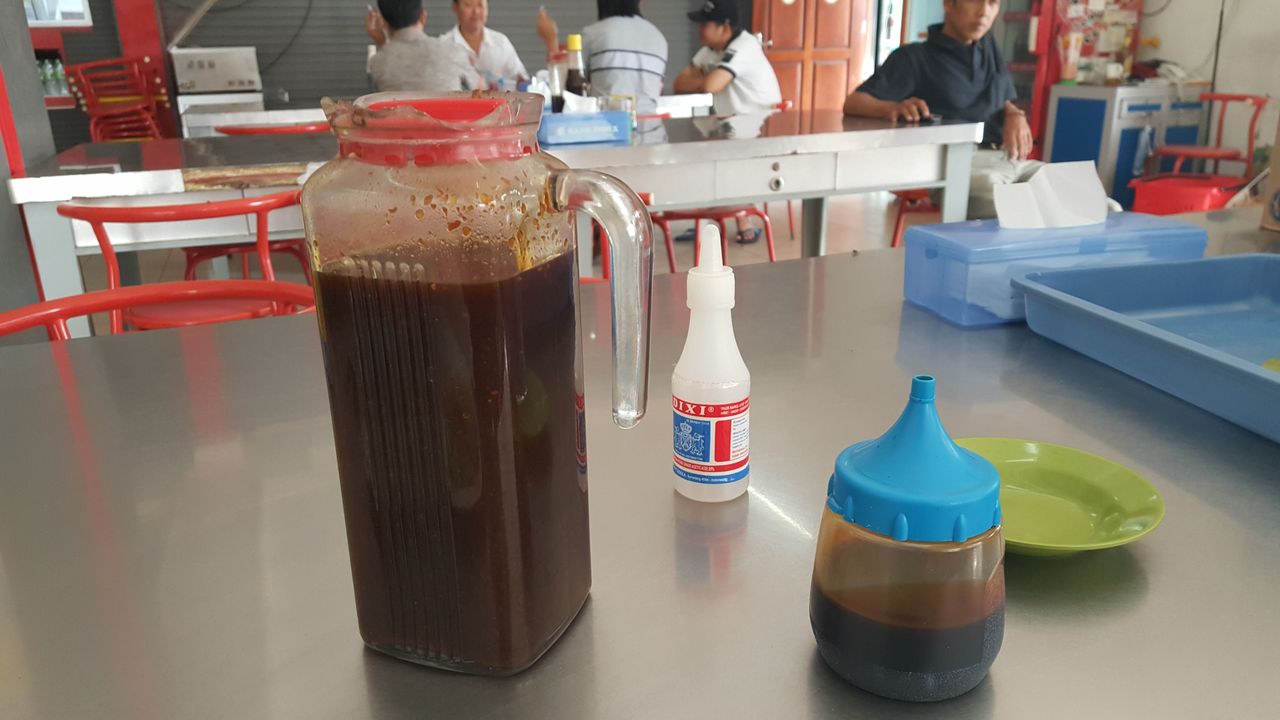
After having my lunch, I took a motorbike to Panjang Port to buy the ticket for the ship. At Rp75.000 (US$5.6), the price is actually quite reasonable.

I then waited at the waiting lounge, featuring carpet no one knows when was it last cleaned, dirty lavatories, seats, and a small kiosk selling some foods. I decided to take a nap on those seats as the lounge was very quiet.


After waiting for 4 hours at the lounge, I got to board the ship through its sole entrance.

The ship has two floors for cars and (mostly) trucks.
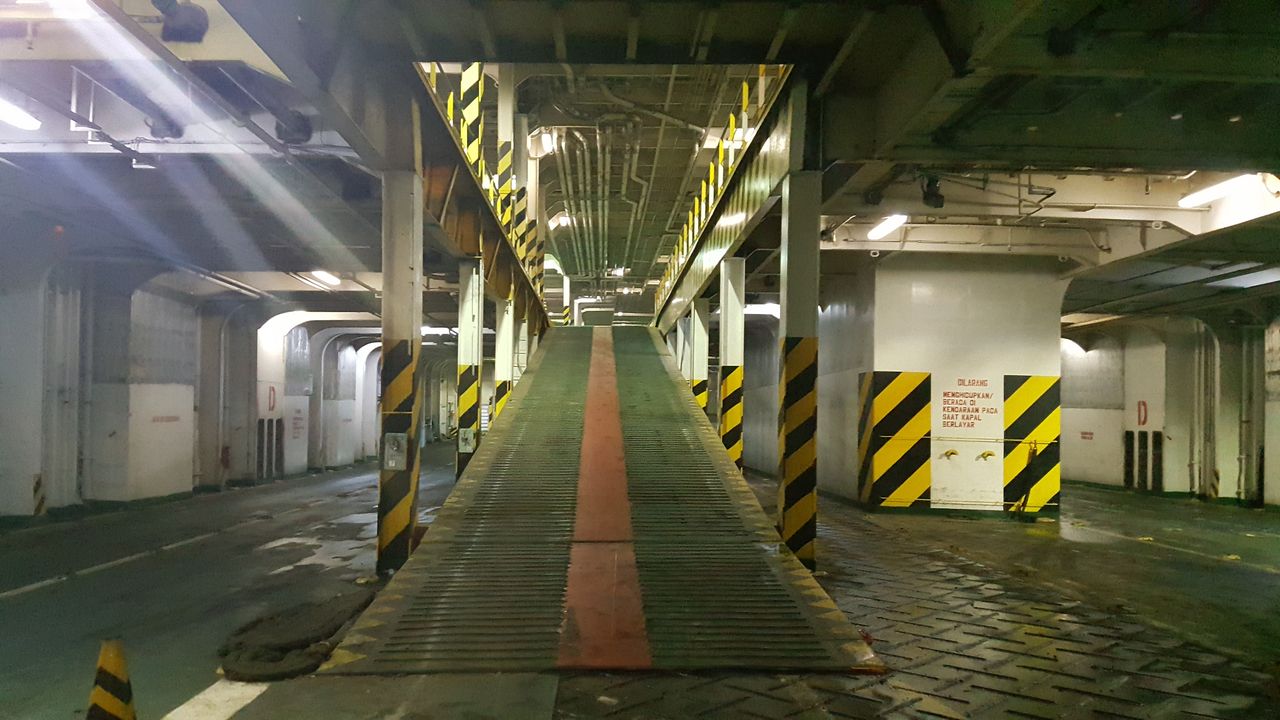
As expected on a ferry ship, the staircase is small.
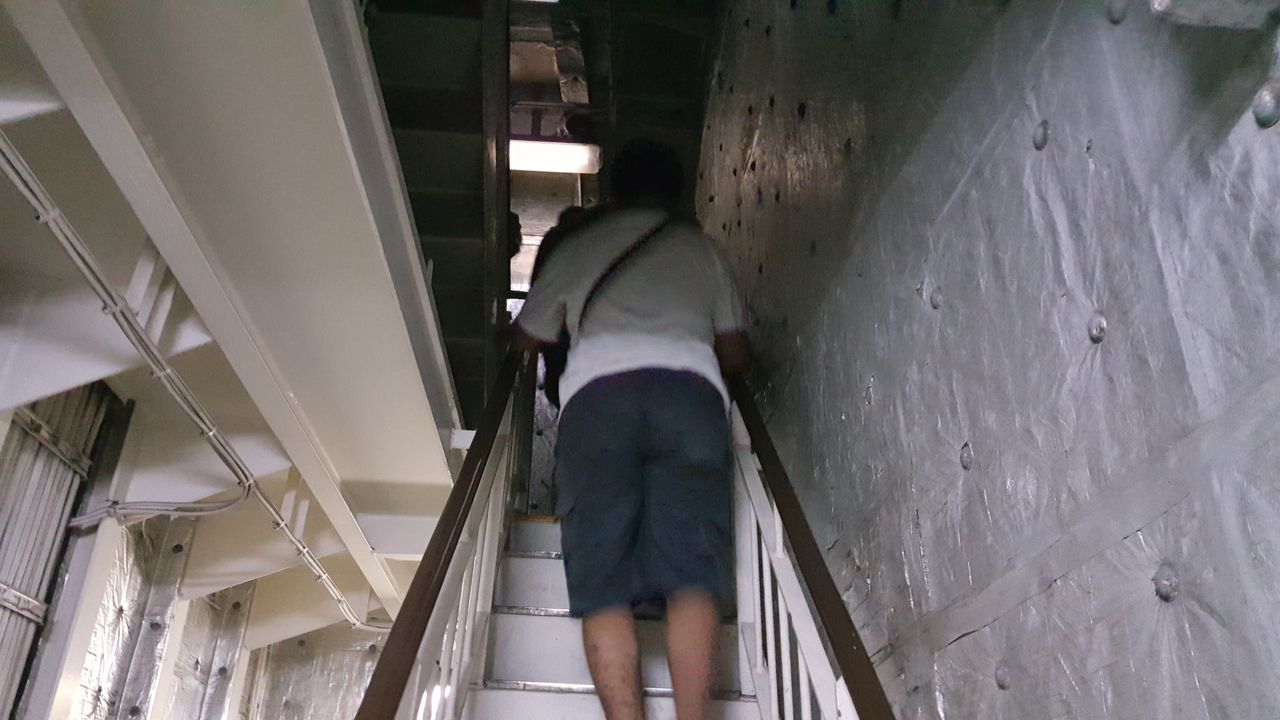
The ship is an ex-Japanese ship, so its designs would reflect its past.
Seating area at the cafeteria

Bunk beds for rooms at the ship (original price: Rp100.000 (US$ 7.5)/person, offered as operational upgrade free of charge when the sleeping area for passenger becomes full)

The ship's TV lounge

Air conditioned sleeping area for passengers - drivers would go here and make the sparsely populated area full.

The original sleeping area for drivers
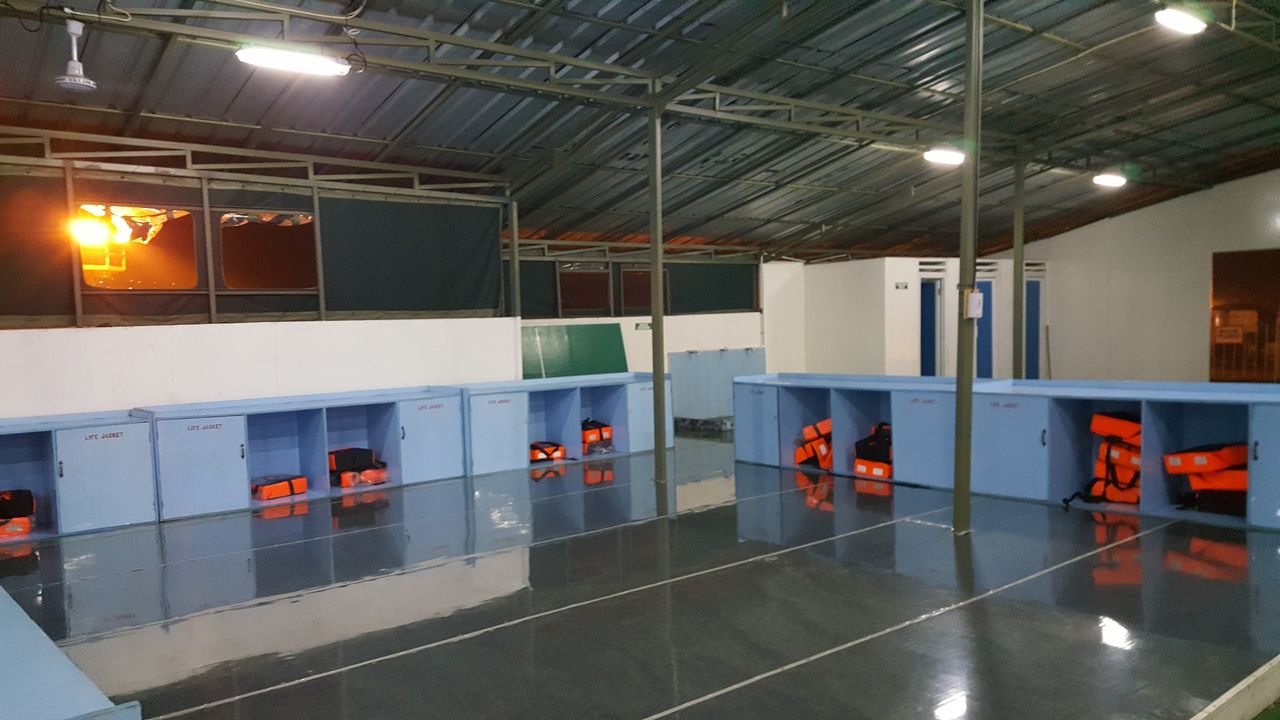
Prayer area

As the air conditioned sleeping area for passengers gets full, I inquired again and got two options: free operational upgrade to the 20-beds room or pay additional Rp50.000 (US$ 3.75) for a private cabin, for which I chose the latter.
The private cabin

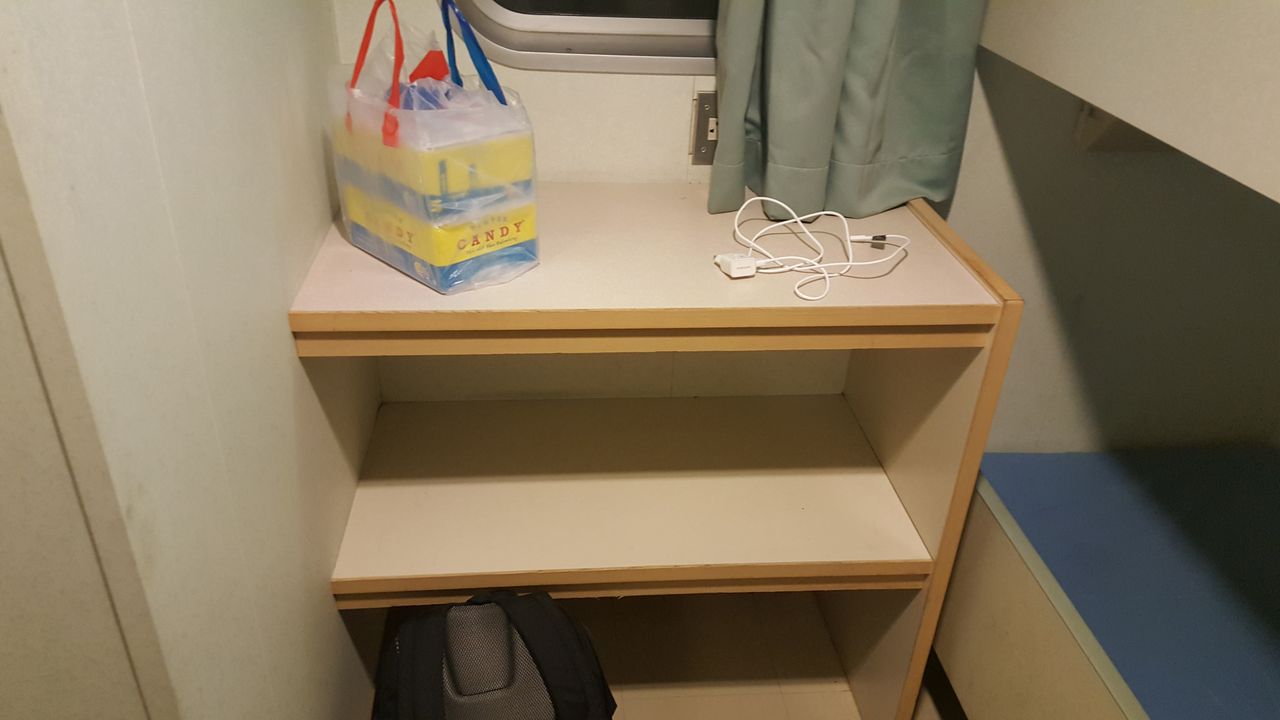
Last view of Bandar Lampung before the pilot ship started taking us away to the open sea


Bandar Lampung from the sea at night

I got to sleep peacefully that night despite the lack of pillow or bolster.
When I woke up in the morning, however, I got panicked as the ship sailed extremely slow (24 km/h) I started getting worried about the traffic in Jakarta.

North Jakarta seen from the sea
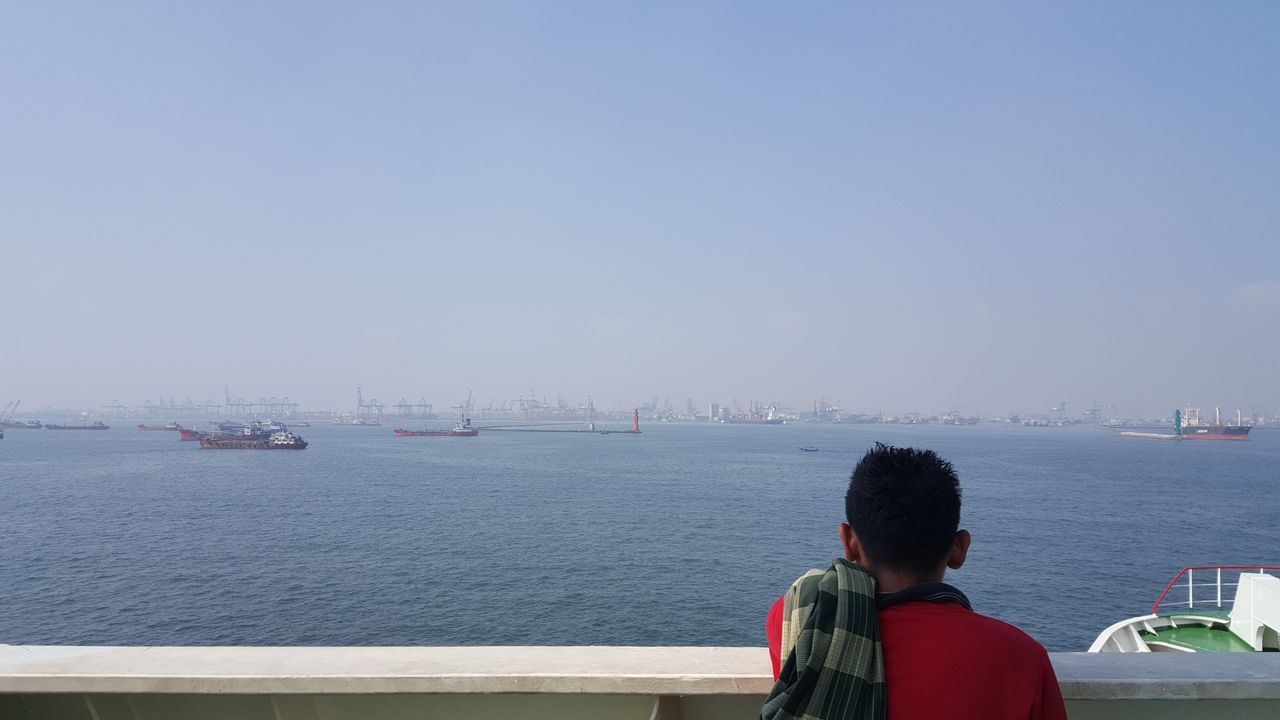
The view just before arriving Tanjung Priok Port.

Reached the port? Not yet - the door has yet to open.

The ship was indeed dominated by trucks and their drivers.

Last view of the ship.


Verdict: Do you have a tight schedule? Don't take the ship. Otherwise, the ship is quite an acceptable way to save on one night stay at a hotel.







Thanks for sharing!
I took numerous of CGK-TKG-CGK flights on GA during this past year. Similar with your flight, service is very rushed on all my flights, but I guess the crews just have to do it because flying time is very short (average is only 25 mins according to Flightradar).
The meal indeed looks like a cost-cutting downgrade though. I remember having more than your Belvita biscuit...
I didn't know CGK T3 offers free shower rooms for passengers to use, I'll definitely check it out next time during my visit to T3.
Once again thanks for sharing!
25 minutes is indeed short, though for such a short flight providing snacks like the way they provide newspapers could be an interesting idea.
A typical snack on short-haul Garuda Indonesia flight was usually one bread with savoury filling, one bread with sweet filling, and one small bottle of mineral water. Changing the sweeter bread to belVita biscuit, therefore, could be considered as a deviation to that rule of thumb, which as you noted means cost-cutting.
I have yet to see shower rooms on Jakarta CGK terminal 2 or 1, so that was quite new for me as well. You should try using it - it's a proper bathroom, works quite well, and most importantly free of charge.
Thank you for reading!
The vessel looks like a RORO ship where it is used to transport motor vehicles.
Thank you very much for sharing the report. I really appreciate it especially the last part on the ferry report.
Thank you for visiting!
The ship looks like one because it is one, just that unlike the Merak-Bakauheni ferry that route is very heavily dominated by trucks due to its uncertain schedule.